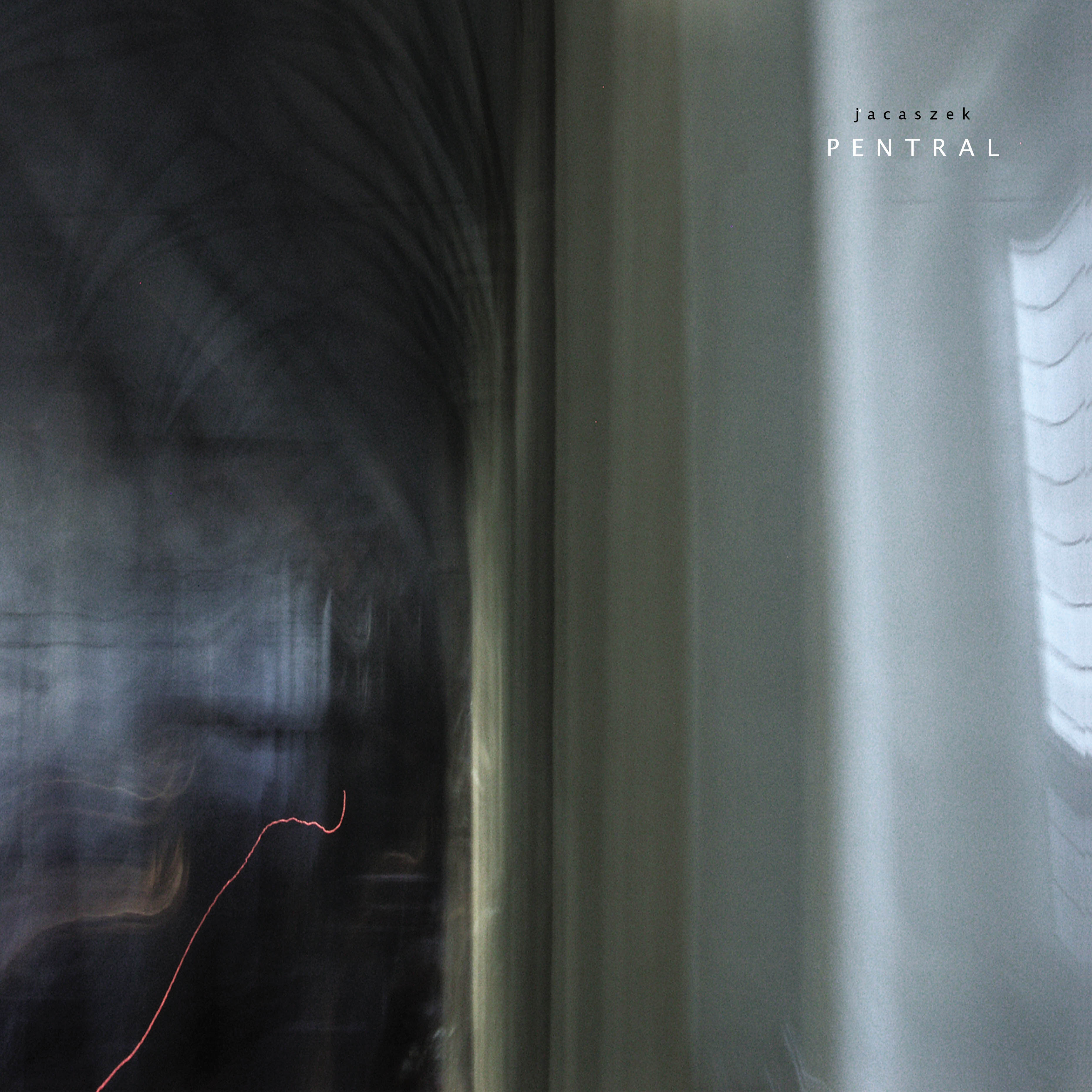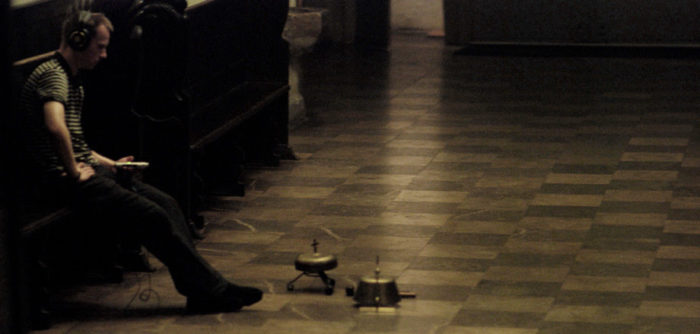Paweł Janas /GAZETA WYBORCZA „Michał Jacaszek to artysta niezwykły. Nie zabiega o uznanie szerokich mas słuchaczy, a jego dzieła lokowane są gdzieś na marginesie, w kręgu muzyki niezależnej. Co najciekawsze, nie zmienia to faktu, że z każdym kolejnym krążkiem jego twórczość zyskuje coraz większe grono wielbicieli. A przypomnijmy, że ma on w swej dyskografii takie dzieła jak „Lo-Fi stories” – niby soundtrack do polskich bajek, uroczo piosenkowy, jazzujący „Sequel” nagrany z Miłką Malzahn, czy poruszająco melancholijne „Treny”. Do tego dodajmy jeszcze krążek „Kompleta” Stefana Wesołowskiego.
Najnowszy album Jacaszka „Pentral” jest swego rodzaju kontynuacją twórczych dokonań z dwóch ostatnich ubiegłorocznych dzieł. Przypomina nieśpieszny, liryczny tok owych płyt, zderzając klasyczne instrumentarium ze współczesną, elektroniczną obróbką, ale i dlatego, że jest przekonującą próbą stworzenia współczesnej muzyki religijnej. Muzyki dalekiej od wszelakiej sztampy czy pretensjonalności, nieco wymagającej, za to bardzo oryginalnej i pasjonującej.
O religijnym charakterze tej twórczości decyduje już sam fakt, że płyta była nagrywana w trójmiejskich świątyniach. O ile jednak wspomniana płyta Wesołowskiego za treść brała modlitwę brewiarzową, o tyle Jacaszek stawia na dźwięk, barwę, nastrój. Rezygnuje z jakichkolwiek tekstów, nawet tytułów utworów. Jako wskazówka ma nam wystarczyć tytuł „Pentral”, co – jak sam autor wskazuje – z łaciny tłumaczyć można jako świątynia, wnętrze i duch – każde z tych odczytań może być tu trafne.
W bazylice w Oliwie, w kościele Mariackim w Gdańsku, a także u gdańskich dominikanów autor nagrał partie organowe (zagrał je m.in. Wesołowski), wokalizy (śpiewała m.in. Maja Siemińska, znana z wcześniejszych prac Jacaszka), a wreszcie kościelne dzwonki, odgłosy otoczenia, przechodzących osób, itp. Całość poddał drobiazgowy studyjnej obróbce, stawiając właśnie na kolor i klimat, wykorzystując tylko drobne wycinki np. partii organowych (czasem bardzo dynamicznych) czy wokalnych. Często słyszymy je tylko w fazie zanikającej, gdy już ledwie wybrzmiewają w zaułkach świątynnych wnętrz, mieszając się z innymi odgłosami. Laptopowa elektronika zyskuje tu nowy wymiar.
Rzecz jest więc swego rodzaju kolażem dźwiękowym, choć starannie przemyślana struktura sprawia, że nie mamy wrażenia chaosu czy nieczytelności. Co więcej, całość nabiera wręcz cech kontemplacyjnych. Odwołując się do – swoiście tu zrozumianej – techniki nagrań terenowych, Jacaszek pozwolił przemówić wnętrzom gotyckich świątyń.
Mariusz Herma/Przekroj.pl: „Kościoły nie były puste. Zwiedzający i modlący się pozostawili dźwięki kroków, szmery, szurania, szepty. To wszystko znalazło się na nagraniach” – mówi Michał Jacaszek, który z zestawem mikrofonów odwiedził trzy zabytkowe kościoły gotyckie w Trójmieście. Stymulując ich wnętrza pojedynczymi akordami organów, dzwonkami czy ascetycznym śpiewem, gdańszczanin zamierzał odsączyć brzmienie samego budynku. Podczas późniejszej obróbki studyjnej odrzucił więc początkowe bodźce, aby zwielokrotnić pochodne im pogłosy i echa.
Być może idea przerosła nieco jej wcielenie, bo ponure, ascetyczne rezultaty eksperymentu Jacaszka nie są ani tak bezpośrednie, ani tak porywające (w kategoriach ambientowych), jak ubiegłoroczne „Treny”. Jak ulał pasują za to do wielkopostnych wyciszeń. Kto wie, może „Pentral” (łac. wnętrze, duch, świątynia) stanie się przyczynkiem do narodzin turystyki akustycznej?
Łukasz Iwasiński/ ONET.PL: „Michał Jacaszek wyrasta na jednego z najciekawszych krajowych twórców elektroakustycznych. Każdy jego kolejny projekt dowodzi, że to muzyk konsekwentnie poszerzający swe artystyczne horyzonty.
Jego pierwszy autorki krążek („Lo-Fi Stories”) wypełniały urokliwe, nieco figlarne kolaże oparte na próbkach z zarejestrownych na winylach bajek, wplecionych w abstrakcyjną, ale ciepłą tkankę dźwiękową, a rozgłos przyniosły mu pełne elegancji impresyjne, jazzujące piosenki z poetyckimi tekstami Miłki Małzahn (płyta „Sequel”). Ostatnio odnalazł się na gruncie bardziej minimalistycznej, medytacyjnej, na swój sposób odwołującej się do muzyki sakralnej estetyki. Poprzedni album, „Treny” zderzał elektronikę z oszczędną kameralistyką. Eteryczne, wysubtelnione, nierzadko przesycone przejmującą nostalgią (bądź nieznośną melancholią – w zależności od wrażliwości słuchacza) dźwięki sytuowały się w okolicach impresji Maxa Richtera, a przy tym zachwycały szacunkiem dla każdego, najdrobniejszego wybrzmienia niczym dokonania microscopic music z kręgu Taylora Deupree i jego wytworni 12K.
Na „Pentral” Jacaszek jeszcze bardziej wnikliwie studiuje istotę dźwięku. Już sam tytuł (po łacinie oznaczający wnętrze, ale i świątynię) sugeruje charakter płyty. Materiał ją wypełniający realizowany był w gdańskich gotyckich kościołach. Autor zgłębia fenomen występującego w nich pogłosu. Korzysta tu ze strategii mistrzów field recordingu, wykorzystując naturalne właściwości przestrzeni w której nagrywa, niekiedy traktując ją samą jako źródło dźwięku. Na całościowy efekt składają się zarejestrowane w zabytkowych świątyniach wokale (m.in. tenor operowy Stefan Cejrowski i znana z „Trenów” Maja Siemińska) oraz brzmienia uchwycone w otoczeniu – zarówno te niewywołane przez artystów (jak najróżniejsze szmery, odgłosy kroków, zegara, dzwonów), jak i przez nich wywołane, w końcu organowe sample. Tak zebrany materiał stał się przedmiotem gruntownej studyjnej obróbki. Jacaszek wziął na warsztat przede wszystkim próbki następujących po wybrzmieniu momentów rozchodzenia się dźwięku, jego rezonowania i zamierania akustycznej fali. Dzięki temu osiągnął niebywałą przestrzeń. Zaskakująca jest wielowymiarowość jaką w ten sposób osiąga. Jest tu tajemniczość, medytacyjny spokój, a niekiedy robi się złowieszczo, pojawia się wręcz majestatyczny dramatyzm.
Zdaje się jednak, że Jacaszek nie szuka misteryjengo uniesienia, wykorzystuje służące wywołaniu tego stanu środki, ale stają się one dla niego wyłącznie przedmiotem artystycznej wiwisekcji. Koncentruje się na czysto akustycznej stronie, a nie doświadczeniu duchowym. Przy czym absolutnie nie umniejsza to jego dzieła, będącego przykładem mistrzowskiej sublimacji i celebracji dźwięku, ale bez zbędnej estetyzacji czyniącej z niego miałki, relaksacyjny ambient. Wręcz przeciwnie – nawet w najbardziej spokojnych fragmentach obcujemy z surowym, intensywnym brzmieniowym żywiołem.”

